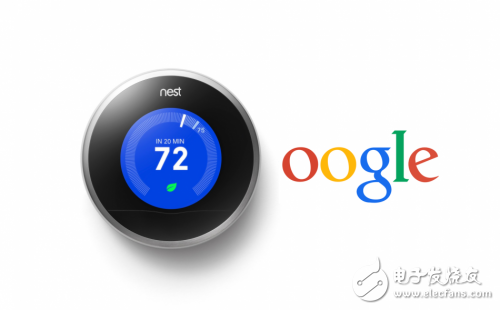Failed mergers and acquisitions
A few years ago, Google realized that if they wanted to be in a weight-lifting position in the coming world, they had to make a huge shift. In particular, they want to broaden their search and advertising business, including sensors and artificial intelligence.
In early 2014, they realized that they missed the IoT ticket. Taking into account the value of future family data, they spent $3.2 billion to buy Nest.
This transaction seems to be running badly.
A large part of Nest's value is that Google feels they can recreate a single item IoT gateway (IoT hub, which supports various IoT protocols, named Flintstone) according to the thermostat standard, and is equally popular.
Looking back at the big picture, the IoT consumer market looks more like relying on a complete ecosystem. Most consumers expect to buy a major platform product, such as a gateway or can be on an interface layer ( For example, homekit?) operates all products, rather than buying items from different protocols.

If you have this product (Nest is likely to package the thermostat inside), then Google has a great chance to become the biggest player in the future of the highly competitive ocean.
For now, this gambling is undoubtedly bad. When Nest released Flintstone is still unknown, and the only hardware product released in the past two years was Dropcam ($555 million) acquired at an excessive price.
The internal chaos that came out in March this year also revealed some problems and a brief description:
The cultures of the two teams at Dropcam and Nest are vastly different and run poorly. With the 100 employees coming in through the merger, almost half have gone.
Nest's CEO, Tony Fadell, seems to have a "Jobs syndrome" that is very authoritarian in product and business and has little room for negotiation. The CEO of Dropcam recently called Fadell a "tyrant." In addition, most of Nest's employees have cashed in Google/Alphabet stock and are leaving.
The trust between Alphabet and Nest doesn't look very good. The best evidence is that Google itself released the IoT gateway OnHub to replace Flintstone, which is always waiting.
All phenomena on the surface of Alphabet, seeing the acquisition of Nest as a poor investment.
Failed communication
From a macro perspective, it's really hard to understand why the big players in the IoT space have barely led the IoT to progress even a little. The products that users want are clearly defined - a unified app and an inexpensive gateway, and no one still makes these things until now.
Nest has only developed two new protocols, Thread and Nest Weave (a Thread-based application layer protocol) for two years. Many people think that these two things are very good, but this is like the BlackBerry that praised its BB10 better than iOS, but in fact the market share fell by 4%.
(Additionally, it is worth mentioning that Google itself has made a new agreement, Weave, basically the same thing - the spokesperson can't even tell the difference between them. It also shows Nest and Alphabet. The crack between the trust.)
Although Nest Weave may be good, it still faces the same problems as Zigbee and Z-Wave - consumers don't know what these protocols are all about.
If this is not bad enough, only 1 in 8 users use the 'Work Wiht Nest' product. So their interconnection tasks are not doing well. More simply, even early seed users did not use these products.
So, who is developing this killer gateway and application?
No, no one.
Apple's HomeKit uses Apple TV as a gateway to control products from different vendors through Siri. If you don't have Applt TV and still want to control a variety of furniture products, then you can only use a third-party gateway, Insteon.
Samsung's layout on smart homes is not as big as Google's. They spent $200 million to acquire SmartThings. But their initial set is up to $250, and it only contains one gateway and three sensors, and their app is poor HomeKit. far.
The newcomer ecobee is also a thermostat and has the same features as the nest, but they are hardware compatible with each platform - HomeKit, SmartThings, Amzon Echo, Wink, IFTTT, and many other small platforms and protocols. Explain that many small manufacturers are preparing for a standard agreement war (which reminds me of hue).
When all the manufacturers are busy, I don’t know what is going on, there is another giant that is overlooking all this. That is Facebook (remember the new year’s 2016 New Year’s wish, is to complete an automated family? Do you think that the small Zai will rely on Alphabet or Apple or Amazon to do this?)
Alphabet is not currently in the last place, but it is also unlikely to rely on Nest to climb to the first place. The entire market seems to have been fragmented and there seems to be no momentum to be united.
Every market share is worth a thousand dollars. Expect big players to become more aggressive – not through acquisitions.
4.2mm Pitch
4.2mm Pitch
ATKCONN ELECTRONICS CO., LTD , https://www.atkconn.com
